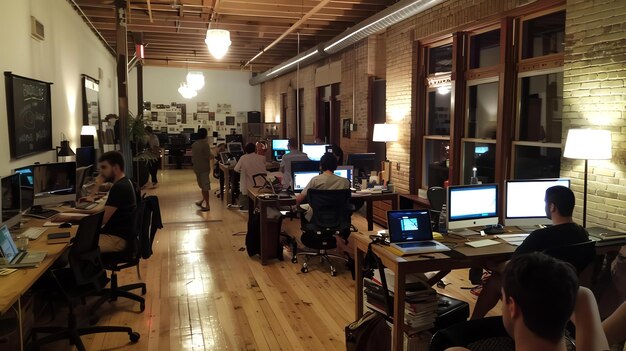Unity’s Pricing Shift: Impact on US Indie Game Developers

Game engine licensing changes, particularly Unity’s new pricing model, are significantly impacting US-based indie developers by altering their budget calculations and potentially disrupting their project timelines.
The landscape of game development has been shaken by recent game engine licensing changes, most notably Unity’s rollout of a new pricing model. For US-based indie developers, who often operate with tight budgets and limited resources, these changes pose a significant challenge, raising questions about project viability and the future of independent game creation.
Understanding Unity’s New Pricing Model
Unity’s recent shift in its pricing structure has sent ripples throughout the game development community. Understanding the specifics of this model is crucial for indie developers to assess its potential impact on their projects and budgets.
The Runtime Fee Explained
At the core of the controversy is Unity’s new runtime fee. This fee is charged based on each install of a game, meaning developers pay Unity a certain amount every time their game is downloaded by a player.
Thresholds and Install Counts
The exact amount of the runtime fee varies based on several factors, including the developer’s subscription plan and the geographical region of the install. However, the most significant factor is the monthly revenue and lifetime installs a game achieves. A game has to pass certain thresholds before the runtime fee kicks in. These thresholds vary, but they generally involve a minimum revenue earned within the past 12 months, as well as a minimum lifetime install count.

For example, if a game made with Unity Personal or Unity Plus surpasses $200,000 USD in revenue and the game hits 200,000 lifetime installs, the developers will have to pay $0.20 per install for users located in “emerging markets” and $0.20 per install for users outside of emerging markets. If the project was created using Unity Pro or Unity Enterprise and makes more than $1,000,000 USD in revenue annually and gets over 1,000,000 lifetime installs, the install fee will be $0.01 – $0.125 depending on region.
- The runtime fee applies retroactively, potentially affecting ongoing projects.
- The thresholds trigger the fee, impacting long-term profitability.
- Install counts create uncertainty for budgeting, especially with free-to-play games.
In summary, Unity’s new pricing model introduces complexities and financial uncertainties that U.S.-based indie developers must navigate carefully.
The Impact on US-Based Indie Developers’ Budgets
The introduction of Unity’s new pricing model has a direct and potentially significant impact on the budgets of US-based indie developers, forcing them to re-evaluate their financial strategies and project forecasts.
Increased Financial Risk
The runtime fee introduces a new layer of financial risk for indie developers. Previously, developers could rely on a fixed cost for their engine license, allowing them to accurately forecast their development expenses. Now, the cost is directly tied to the success of the game, but not necessarily to its profitability.
Budgeting Challenges
Indie developers often operate with limited capital, forcing them to budget meticulously and rely on crowdfunding or grants to get projects off the ground. The added uncertainty of Unity’s runtime fee makes budgeting significantly more challenging. Developers need accurate estimations of future game installs, but that can be incredibly hard to predict before the game is published.
Renegotiating Contracts and Funding
The changes in Unity’s pricing model may also force indie developers to renegotiate contracts and funding agreements with publishers, investors, or crowdfunding supporters. Developers may need to reduce the development budget allocated for other purposes, like marketing, and reallocate a portion to cover potential runtime fees.

The new pricing model introduces financial vulnerabilities that require indie developers to adapt, potentially impacting their project scopes and timelines.
Indie Developers’ Reactions and Concerns
The game development community, particularly US-based indie teams, has expressed considerable concerns and criticisms regarding Unity’s updated licensing arrangement. The worries are rooted in the potential for financial insecurity and the perceived lack of transparency.
Outcry and Protests
Many indie developers have voiced their disapproval on social media platforms, online forums, and industry events. Some have even considered boycotting Unity or transitioning to other game engines as a response to these adjustments.
Trust and Transparency Issues
Several indie developers have raised concerns about the credibility and clarity of Unity’s new pricing structure. Uncertainty regarding how precisely the ‘install’ metrics will be tracked and verified has stirred apprehensiveness, with doubts around potential revenue miscalculations by the engine company.
The Potential for Innovation Stifling
Indie developers are concerned about how Unity’s new pricing will affect them and the kind of games they create. Many now worry that they won’t be able to take risks and innovate, since they will be focused on how to avoid install fees, which could stifle imagination and experimentation for the indie gaming community.
The lack of foresight and regard for the requirements of small developers in Unity’s current licensing strategy has generated considerable controversy within US independent development teams, generating concerns about stability.
Alternatives to Unity: Exploring Other Game Engines
Faced with the challenges and uncertainty introduced by Unity’s new pricing model, many US-based indie developers are exploring alternative game engines that offer different licensing terms and feature sets.
Unreal Engine
Unreal Engine is a popular choice among developers, known for its visual fidelity and powerful tools. It offers a royalty-based licensing model that comes into effect after a game earns a certain revenue threshold. For many indie developers, this system is more predictable and manageable than Unity’s install-based fee.
- Offers high-fidelity graphics and advanced visual tools
- Royalty-based license kicks in after specific revenue targets are met
- Supports various platforms, including PC, consoles, and mobile
Godot Engine
Godot Engine is an open-source game engine that has gained popularity in recent years. It offers a permissive MIT license, which means developers can use it for free, even for commercial projects, and modify the engine to suit their needs.
- Free to use and modify under the MIT license
- Lightweight and user-friendly, ideal for smaller teams
- Provides 2D and 3D game development capabilities
GameMaker Studio 2
GameMaker Studio 2 is known for its ease of use and focus on 2D game development. It offers a range of licensing options, including a one-time purchase, and is popular among developers who create simple and/or stylized games.
- Easy to use and specifically designed for 2D game development
- Offers a range of licensing choices, including single payment buying
- Suited for developers making stylized or simple games
Exploring these alternatives can help US-based indie developers find a suitable environment for their projects, balancing cost, features, and long-term sustainability.
Strategies for Indie Developers to Adapt
Navigating the altered landscape of the game business demands that independent creative professionals embrace proactive techniques. This involves using financial planning concepts, seeking community support, and being open to changing technology. Creative methods are essential when dealing with instability.
Detailed Financial Planning
Developers need to create a complete financial plan that accurately accounts for the possible effects of install-based fees. This strategy should incorporate realistic estimates for game downloads, revenue growth, and related expenses. By thoroughly analyzing their project’s finances and researching their game industry business they can make educated choices.
Community Collaboration
Getting involved with other developers and sharing knowledge becomes more vital. Community events, forums, and social media outlets can act as systems of assistance where people trade details and tactics. When dealing with general difficulties or solving engine-related issues, knowledge gathering is crucial.
Diversification of Revenue Streams
Finding various revenue streams can soften the risks associated with charging fee based on installs. Indie developers could check out options like providing exclusive experiences through downloadable content (DLC), goods, or collaborations. This involves discovering new strategies to improve income development of the project other than sales of the core game.
The acceptance of these flexible and creative methods helps indie developers to overcome financial hardship and makes it more likely that they will succeed when facing instability in the game business.
The Future of Indie Game Development in the US
The game development industry in the United States is going through changes brought on by factors like Unity’s new pricing strategy. How well independent studios and artists can adapt will define the future. The goal is to manage financial difficulties, remain innovative, and find methods to promote creativity in a constantly shifting atmosphere.
Potential for Innovation
Even with new difficulties, there’s possibility for innovation. Indie game creators are likely to test out novel gameplay concepts, storytelling methods, and aesthetic styles in order to stand out in a crowded market.
Shift to Different Game Engines
Some developers may want to choose unique game engines in order to adapt to Unity’s pricing strategy. Game developers’ decisions on software may have broad consequences for the industry’s competitive landscape and the development of tools.
Emphasis on Community and Support
Even with all other factors, community and support will still be vital to supporting indie game development. As developers cope with industry adjustments, collaborative projects, shared tools, and forums for exchanging knowledge will become increasingly vital. These collaborative connections can contribute to building a robust, encouraging atmosphere.
The long term outlook remains uncertain but innovation, diversification and community support can help indie game developers in the US navigate these hurdles and sustain the spirit of creativity in game.
| Key Point | Brief Description |
|---|---|
| 💰Runtime Fee Impact | New install-based fee adds financial risk and budgeting challenges. |
| 🤔Developer Concerns | Indies worry about transparency and potential stifling of innovation. |
| 🛠️Engine Alternatives | Unreal, Godot, and GameMaker offer different licensing models. |
| 💡Adaptation Strategies | Financial planning, community support, and diversified revenue streams. |
FAQs
▼
The main concerns include increased financial risk for developers, uncertainty in budgeting, and a potential stifling of innovation due to install-based fees affecting profitability.
▼
Unreal Engine uses a royalty-based system, charging fees after a game earns a certain amount of revenue, which is often seen as more predictable than Unity’s install-based fee.
▼
Godot Engine is an open-source game engine with a permissive MIT license, making it free to use and modify, even for commercial projects, offering a cost-free alternative.
▼
Indie developers can adapt by using comprehensive financial planning, seeking encouragement from the community, diversifying revenue streams, and staying flexible with their chosen technologies.
▼
The future depends on indie developers’ ability to navigate these challenges by embracing innovation, considering alternative engines, and fostering strong community support networks.
Conclusion
In conclusion, the game engine licensing changes, especially Unity’s new pricing model, have created considerable uncertainty and challenges for US-based indie developers. Proactive financial planning, community collaboration, and exploring alternative engines can help developers navigate these changes and continue creating innovative games.





![The Impact of [Game Studio Name] Acquisition on AAA Game Development in the US The Impact of [Game Studio Name] Acquisition on AAA Game Development in the US - Cover Image](https://commeplay.com/wp-content/uploads/2025/06/commeplay.com_10_1751054773_82a6c382_cover-360x180.jpg)